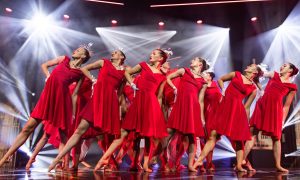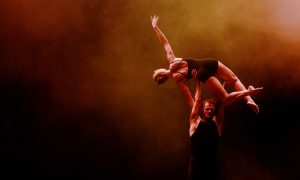Once you leave the studio, do you find yourself still dancing? Down the street, through your kitchen, in your bedroom. Maybe it feels like you’re just moving as normal, but I think we can all agree that there are habits and ways of operating that we take with us wherever we go, even after we leave the studio and the structure of a dance class. This can translate to improved posture, increased mobility and an elevated mood. Yes, this sounds like a good thing, but without our system of checks and balances, this can also create problems for our physical and emotional health. For instance, a strict discipline in the dance studio can reinforce little flexibility in daily life. Overtraining in the studio can translate to overexertion in the workplace, leading to emotional burnout.
Here are four ways (and a bonus one!) in which dance can translate to everyday life and how we can make it as beneficial as possible.
#1. Flexibility
Of course, dancers are all known for their flexibility – but usually in terms of splits, straddles and extension. But be aware that the more movement we have at our disposal, the more elastic our brain and mind can actually be. When we move, we have the ability to increase our range of emotions as well as our ability to manage those emotions. This flexibility can translate to decision-making and relinquishing some control over things we may have no control over. The ability to “stretch” the body ultimately allows us to stretch the parameters of our mind as well. Try to find ways to stretch and expand your body – find new ways of moving, or even simplify your current movement patterns.
#2. Balance
As dancers, it’s important to learn how to balance, shift weight and center the body. Balance in life is just as vital. We often hear the phrase “work-life balance.” This can mean setting limits, creating healthy boundaries and prioritizing self-care. You may notice that when you are physically off-balance, this inevitably translates to feeling emotionally off-balance as well. However, we can use our body to seek balance in order to feel more grounded in our mind. Try this: plant your feet on the ground and slowly raise your heels, or hold onto a table and gently lift one foot off the floor. Pay attention to your posture as you challenge your balance.
#3. Creativity
Movement supports improvisation, imagination and play – all key components of creativity. When you explore new ways of moving and learn new dance skills, it supports your creativity and expands your mind’s horizons. A moving body supports a creative mind. Put some music on and try improvising – authentically moving without a script or agenda.
#4. Coordination
Coordination – like the ability to stabilize the upper body while moving the lower body or engaging in two opposing directions – is a skill that dancers often take for granted. Outside the studio, coordination can come in the form of managing our schedules, holding multiple conversations, or juggling different roles such as student and employee. When you practise coordination in the body, it can allow for greater coordination outside of the studio. The skill is about working together with efficiency and ease, and this can truly come in handy in the real world. Coordination in the body can help facilitate collaboration within communities. We can learn to share ideas, challenge viewpoints, and adapt our methods to be more inclusive and equitable. Try practising movement on both sides of your body, and cross the midline of your body.
BONUS: Communication
“Dance is communication,” Martha Graham said. Dance is a form of nonverbal communication that not only facilitates expressivity but also allows for emotional release, more than any word or phrase can. The more we learn to communicate with our body through dance, the more we can freely express ourselves within our relationships. See if you can find ways to use your body to express a point of view, an emotion or lyrics to a song.
See if you can identify other aspects of the classroom and see how they translate to your everyday life outside the studio. Think of rhythm, flow, timing, partnering, choreography and even performance. The categories discussed here should inspire you to take what you learn in the dance studio and apply it to other aspects of your life. The learning you do shouldn’t be compartmentalised but instead adapted across different environments and situations. You have such special talents and skills that can be applied to all aspects of your life. How amazing that you can practise them wherever you go, thus making dance a part of everything you do!
By Erica Hornthal, LCPC, BC-DMT, Dance/Movement Therapist, Chicago Dance Therapy.
Erica Hornthal, known as “The Therapist Who Moves You,” is a board-certified dance/movement therapist and licensed clinical professional counselor. She is the founder and CEO of Chicago Dance Therapy and the author of Body Aware: Rediscover Your Mind-Body Connection, Stop Feeling Stuck, and Improve Your Mental Health through Simple Movement Practices.














